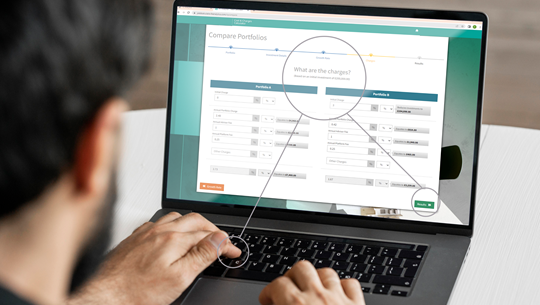As it looks increasingly like we have now passed the peak of the coronavirus crisis in the UK, commentary has turned to what the potential economic fallout could look like. Nervous clients who stoically rode out the initial market falls may now be reconsidering their options. However, with markets still a long way from pre-crisis levels, locking in those losses is still a real risk for those who are considering making withdrawals.
Drawing down assets after a fall in markets makes it much harder for a portfolio to recover and can have a detrimental effect on the amount of income that can be taken from it over the long term. Whatever the circumstance – loss aversion, the need for income due to a change in circumstance or funding retirement – the timing of withdrawals and consequent sequencing risk will be high on the list of conversations that you’re having with your clients.
Communication between adviser and client is key. It’s important that you’re able to manage client expectations and explain the risks and what the long-term cost of overly ambitious withdrawals could be. FE Analytics can help guide your conversations with your clients and establish what a safe withdrawal rate could look like.
FE Analytics allows you to look at previous historical market environments and illustrate what impact they would have had on a portfolio’s performance.
In the below charts we have contrasted the effects of two alternate annual rates of withdrawals during the 2008 financial crash and the subsequent market recovery.
In the first chart we can see the effect of a 6% annual withdrawal on the growth of an initial investment of £100,000. The level of withdrawal – approximately 0.51% taken at each month end – impacted the overall performance of the portfolio during both the market downturn and recovery. This meant the portfolio only managed a growth of 6.07% over the full time period, a loss in real terms when measured against inflation.

This can be contrasted with a chart over the same time frame and with the same initial investment but with a slightly lower annual withdrawal rate of 4%.
By making this small adjustment, the withdrawal level has been reduced to approximately 0.34% per month and the drag on the portfolio is minimised, allowing the portfolio to grow by 24% over the same time period. A comparative rise in value of over £18,000. Reducing the monthly withdrawals by just 0.17% demonstrates the significant impact that sequencing risk can have on long term performance.

Together, these charts are a helpful illustration of the benefits of setting a withdrawal rate that accounts for the potential risks of market volatility and can help you demonstrate the sequence-of-returns risk through turbulent market conditions, in a visual way your clients can relate to.
FE Analytics includes a huge range of sophisticated charting tools to help you analyse performance, ratios, holding information and risk. It gives you access to over 300,000 instruments and allows you to research from a full range of index and sector benchmarks."
You can compare any instrument against another so you can understand the effect of proposed changes to a portfolio and calculate a potential reduction in yield over customisable time periods and growth rates. It allows you to demonstrate the value of your investment advice and ensure you have a fully compliant process by saving an audit trail of all your research and historical portfolio changes.
FE Analytics is a one-stop shop for all your investment research and analysis, portfolio construction, due diligence and ongoing monitoring. If you would like a live demonstration or more information on how we can help you make better and more informed investment decisions for your clients, please get in touch with one of our experts.




